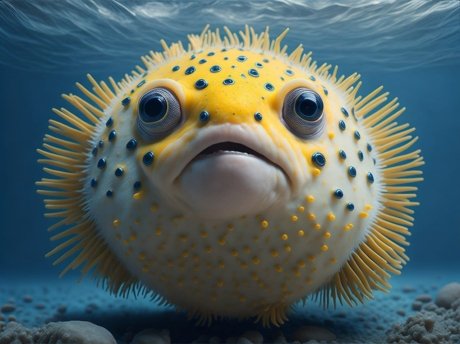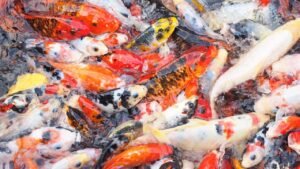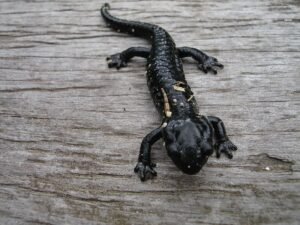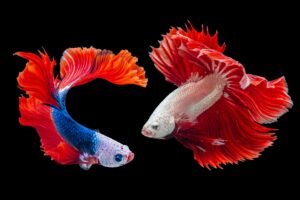Axolotl VS Mudpuppy | 6 Differences, Similarities, Facts, Care Tips
Diving into the realm of aquatic marvels, we encounter two captivating creatures that have intrigued scientists, enthusiasts, and nature lovers alike: the Axolotl and the Mudpuppy. In this detailed exploration, we’ll navigate through the intricate features, behaviours, habitats, and unique qualities that set these aquatic beings apart or Axolotl vs Mudpuppy. By the end of this article, you’ll have gained an in-depth understanding of the Axolotl and Mudpuppy, as well as their captivating distinctions and shared wonders.
The Axolotl: Unraveling the Enigma of Neoteny
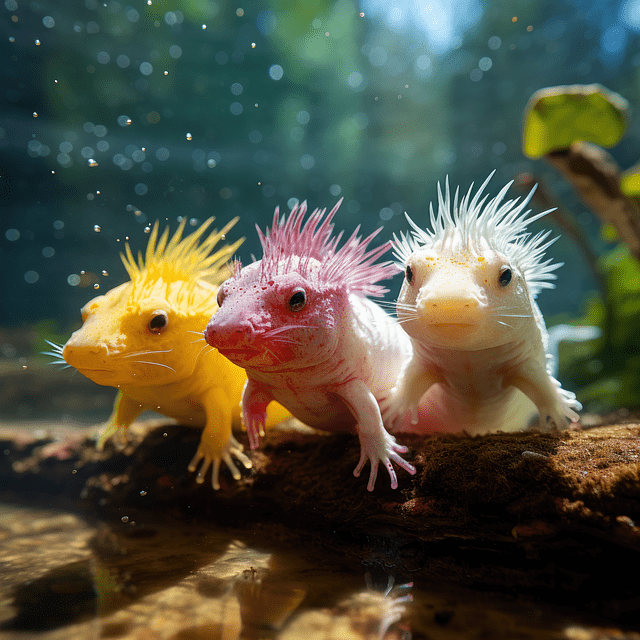
Origins and Background
Hailing from the Xochimilco lakes and canals in Mexico, the Axolotl, scientifically termed Ambystoma mexicanum, stands as a living enigma. Often dubbed the “Mexican walking fish,” it defies typical amphibian development through a phenomenon called neoteny. Unlike its counterparts, the Axolotl retains its juvenile aquatic form throughout its life, never undergoing metamorphosis.
Physical Characteristics
A remarkable spectacle, the Axolotl boasts feathery external gills that serve as both respiratory organs and aesthetic wonders. These gills, resembling delicate fluttering plumes, enhance its oxygen absorption. Further captivating observers, the Axolotl’s skin presents a palette of colors, ranging from browns to blacks and the striking golden albino variation.

Habitat and Behavior
At home in freshwater bodies such as lakes, ponds, and canals, Axolotls are adept swimmers, facilitated by their elongated, finned tails. Contrary to their aquatic nature, these creatures possess a stunning regenerative ability. Notably, they can regenerate limbs, portions of their spinal cord, and even sections of their heart tissue. This regenerative prowess has led to significant interest among scientists, with potential implications for human regenerative medicine.
Distinctive Traits
The Axolotl’s exceptional regenerative abilities stand as its crowning trait. This unique capability to regrow lost body parts has earned it a starring role in scientific studies, offering insights into tissue regeneration that could revolutionize medical approaches. Moreover, the Axolotl holds cultural significance in Mexico, symbolizing the intricate biodiversity of Xochimilco.
The Mudpuppy: Unveiling Aquatic Excellence

Background and Distribution
In North America’s aquatic realms, the Mudpuppy, scientifically Necturus maculosus, emerges as a lesser-known gem. Unlike the Axolotl, the Mudpuppy undergoes metamorphosis during its development, transitioning from a juvenile aquatic form to an adult with terrestrial-like characteristics.
Physical Characteristics
Maturing into a form defined by four robust legs and a textured, rough skin, the Mudpuppy showcases a transformation reminiscent of typical amphibian development. Colour variations span the spectrum from dark browns to serene olive greens.

Habitat and Behavior
Thriving in North American freshwater streams and rivers characterized by clarity and coldness, Mudpuppies exhibit nocturnal tendencies, making them elusive during daylight hours. Notably, their external gills, resembling vibrant red plumes, enable them to extract oxygen from water, akin to their Axolotl counterparts.
Adaptations for Aquatic Living
The Mudpuppy’s aquatic lifestyle is facilitated by adaptations such as its external gills, optimized for efficient oxygen absorption. Additionally, its secretion of a slick mucus aids in graceful aquatic movement. This mucus-rich adaptation allows Mudpuppies to navigate their habitats with ease.

A Comparative Analysis: Axolotl vs Mudpuppies
Comparison and differences between Axolotl vs Mudpuppy:
| Aspect | Axolotl | Mudpuppy |
|---|---|---|
| Scientific Name | Ambystoma mexicanum | Necturus maculosus |
| Origin | Xochimilco lakes and canals, Mexico | North American freshwater bodies |
| Development | Retains aquatic juvenile form (neoteny) | Undergoes metamorphosis to adult form |
| Physical Features | Feathery external gills, slimy skin | Four sturdy legs, rough skin |
| Respiration | External gills for oxygen absorption | External gills for underwater breathing |
| Habitat | Freshwater bodies – lakes, ponds, canals | Freshwater streams and rivers |
| Nocturnal Habits | Nocturnal behavior | Nocturnal behavior |
| Special Adaptations | Exceptional regenerative abilities | Secretion of mucus for movement in water |
| Colour Variations | Various colours, including albino variants | Dark browns to olive greens |
| Conservation Status | Critically endangered due to habitat loss | Least Concern (not globally threatened) |
| Cultural Significance | Symbol of Xochimilco’s biodiversity | Lesser known, not widely recognized |
| Human Interaction | Popular exotic pet | Less common as a pet |
| Potential Research Value | Medical implications for regenerative medicine | Insights into aquatic adaptations and behaviour |
Life Stages and Metamorphosis: Axolotl vs Mudpuppy
Axolotls and Mudpuppies diverge significantly in life stages. The Axolotl retains its aquatic juvenile form throughout its life, while Mudpuppies undergo metamorphosis, transitioning into a more terrestrial-like adult form.
Habitat and Distribution: Axolotl vs Mudpuppy
Although both creatures thrive in aquatic environments, their geographical domains set them apart. Axolotls are native to Mexico’s Xochimilco basin, while Mudpuppies inhabit North American freshwater bodies.

Regeneration vs. Metamorphosis: Axolotl vs Mudpuppy
The most compelling comparison emerges between Axolotls’ regenerative capabilities and Mudpuppies’ metamorphic transformations. Axolotls can regrow lost body parts, an ability with potential medical breakthroughs, while Mudpuppies undergo a complete metamorphosis during development.
Conclusion: Embracing Nature’s Diversity
In the grand narrative of aquatic life, the Axolotl and the Mudpuppy emerge as embodiments of nature’s diversity and ingenuity. The Axolotl’s neoteny and regenerative prowess offer insights into resilience, while the Mudpuppy’s metamorphosis showcases evolution’s multifaceted journey. These creatures, though distinct, contribute to the rich tapestry of life on Earth.
FAQs: Unraveling Curiosities Axolotl vs Mudpuppy
-
Are Axolotls suitable pets?
Yes, Axolotls can be kept as pets, but their specific needs must be met for their well-being.
-
What are Mudpuppy predators?
Mudpuppies face threats from larger fish and aquatic predators in their habitats.
-
Are Axolotls endangered?
Yes, Axolotls are critically endangered due to habitat loss and pollution in their native Xochimilco.
-
How do Mudpuppies breathe?
Mudpuppies utilize their external gills for underwater breathing, a remarkable adaptation.
-
Do Axolotls ever metamorphose?
In rare instances, external factors can trigger Axolotls to undergo metamorphosis.
-
Can you have both Axolotls and Mudpuppies in the same habitat?
It’s not recommended to house Axolotls and Mudpuppies together due to their different habitat requirements and behaviors.
-
What is the lifespan of an Axolotl?
Axolotls can live for around 10 to 15 years in captivity if provided with proper care and a suitable environment.
-
Do Mudpuppies have any predators in their natural habitat?
Yes, Mudpuppies face threats from larger fish, aquatic birds, and even some mammals in their native habitats.
-
Are Axolotls illegal to own in certain places?
Yes, in some regions, Axolotls are considered endangered species and may be protected by law, making ownership or trade illegal.
-
Can you interact with Mudpuppies like you can with Axolotls?
Mudpuppies are generally less interactive than Axolotls and might not respond as actively to human presence.
-
Are Axolotls cannibalistic?
Axolotls can exhibit cannibalistic behavior, especially if they are housed together and not provided with sufficient space and food.
-
Are Axolotls social animals?
Axolotls are not inherently social creatures and are generally content living solitary lives. However, they can be housed with other compatible tankmates.
-
What is the significance of Axolotls in Mexican culture?
Axolotls hold cultural significance as a symbol of the Xochimilco region’s biodiversity and have appeared in ancient Mexican art and mythology.
-
Can you keep Mudpuppies in a home aquarium?
While it’s possible to keep Mudpuppies in captivity, their specialized needs, including cold water requirements, should be carefully considered.
-
Are Mudpuppies affected by habitat pollution?
Yes, Mudpuppies are sensitive to water pollution, and their populations can be threatened by pollution in their natural habitats.
-
What is the primary diet of Axolotls?
Axolotls are carnivorous and primarily feed on aquatic insects, small fish, worms, and other small aquatic creatures.
-
Do Mudpuppies have any unique behaviors?
Mudpuppies are known for their distinctive walking-like movement on the substrate of their aquatic environments.
-
What are the conservation efforts for Axolotls?
Conservationists are working to protect the remaining Axolotl populations by addressing habitat loss and water pollution issues in their native range.
-
Can Axolotls survive outside of water?
Axolotls are adapted to an aquatic environment and should not be kept out of water for extended periods, as it can lead to stress and health issues.
-
What do Mudpuppies eat in the wild?
In the wild, Mudpuppies feed on a variety of prey including aquatic insects, crayfish, small fish, and snails.
Recommended related to Axolotl vs Mudpuppy:
Black Axolotl | Characteristics, Prices, Care Tips, Breeding, History


























